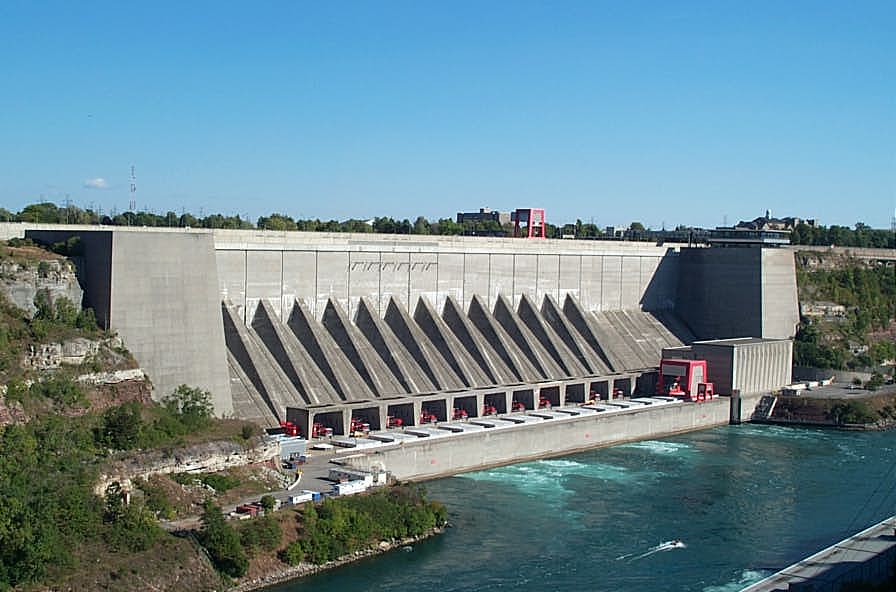Tajik Energy Ministry sees no need in cleaning Nurek reservoir

By Kamila Aliyeva
There is no need to clean up the reservoir of the Nurek hydropower plant, according to Tajik Minister of Energy and Water Resources Usmonali Usmonzo, Avesta reported.
The minister noted that one of the foreign companies carried out a feasibility study on this issue. The results confirm that it is possible to carry out the cleaning of the reservoir, but there is no such need yet.
“The fact is that some funds are needed for these purposes. In addition, after the launch of the first stage of the Rogun HPP, the lower HPPs of the Vakhsh cascade will receive clean water, and they will be able to operate at full capacity. Therefore, now there is no need to clean up the Nurek reservoir,” he added.
Earlier experts and power engineers expressed various opinions regarding the siltation of the HPP on the Vakhsh cascade and the way to resolve this issue. In particular, it was proposed to find investors and speed up the construction of new hydro power plants on the Surkhob and Obihingob rivers.
It was noted that with the construction of new hydro power plants on the main tributaries of these rivers, a significant decrease in the amount of sediment entering the reservoir of the HPP of the Vakhsh cascade, including the Rogun HPP, should be expected.
Experts believe that all operating hydro power stations of the Vakhsh cascade are subject to investigation for siltation. First of all, it concerns the reservoir of the Nurek HPP, where, according to various estimates, siltation makes about 40 percent.
“If the siltation of this reservoir will continue and the sediments will come close to the threshold of the water receiver of the hydroelectric units, then the Nurek HPP will lose its effectiveness in the next three or four decades,” experts noted.
The vitality of the Nurek hydropower plant can be provided by the Rogun HPP with a reservoir of 13.3 cubic meters. After the construction of the dam of the Rogun HPP, clean water will start to flow into the lower reservoirs of the Vakhsh cascade, including the Nurek HPP.
“The activities of the Rogun HPP are designed for 170 years. If we start the construction of new hydraulic facilities on the Surkhob and Obihingob rivers, the sediments in the Rogun Reservoir will be minimal, and the life of the said HPP will last for another decade,” experts believe.
The HPPs of the Vakhsh cascade include Nurek, Baypazin, Sangtudin HPPs 1 and 2, as well as the Sarband HPP. The continuation of this cascade is the Rogun HPP, with a capacity of 3,600 MW and the proposed Shurab hydropower plant with a capacity of 1,000 MW.
The Nurek HPP is the country and Central Asia’s largest hydropower facility providing over 70 percent of the total generation in Tajikistan. It is part of the Vakhsh cascade of hydropower plants. The plant’s installed capacity is 3,000 MW (eight 335 MW units and one 320 MW unit). It was commissioned in 1972; the latest unit was commissioned in 1979. At present, the plant is operating at 77 percent of its design capacity because of obsolete equipment and lack of maintenance. Therefore, the maximum capacity of the Nurek HPP in recent years has not exceeded 2,220 MW.
The storage volume of the reservoir is 10.5 cu km (the effective storage is 4.5 cu km); its surface area is 98 sq km and length about 70 km. The dam has 300 m in height (the world’s highest dam of this type until 2013). The average output exceeded 10,223 million kWh a year between 2014 and 2016.
Mountainous Tajikistan experiences frequent power blackouts. Previously, Central Asia had a unified energy system. It included 83 power plants with total capacity of 25,000 megawatts in the territory of Uzbekistan, Tajikistan, Kyrgyzstan, Turkmenistan and southern Kazakhstan.
In winter, Tajikistan and Kyrgyzstan accumulated water in reservoirs and received electricity and energy resources (coal and natural gas) from Kazakhstan, Turkmenistan and Uzbekistan. In summer, Tajikistan and Kyrgyzstan sent water to Uzbekistan and Kazakhstan for irrigation farming.
As much as 50 percent of the power generating capacity in the united power grid of Central Asia and Southern Kazakhstan was concentrated in Uzbekistan.
However, after Turkmenistan and Uzbekistan left the unified energy system of Central Asia in 2003 and 2009, respectively, the system ceased to function.
---
Kamila Aliyeva is AzerNews’ staff journalist, follow her on Twitter: @Kami_Aliyeva
Follow us on Twitter @AzerNewsAz
Here we are to serve you with news right now. It does not cost much, but worth your attention.
Choose to support open, independent, quality journalism and subscribe on a monthly basis.
By subscribing to our online newspaper, you can have full digital access to all news, analysis, and much more.
You can also follow AzerNEWS on Twitter @AzerNewsAz or Facebook @AzerNewsNewspaper
Thank you!
